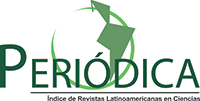Fundamentally understanding carbonation-induced corrosion of steel in environmentally friendly concretes
DOI:
https://doi.org/10.21041/ra.v14i3.764Keywords:
carbonation-induced corrosion; environmentally friendly cements; pore solution; pore structure; moisture.Abstract
Reducing greenhouse gas emissions in concrete production is crucial to achieve sustainability goals. One of the primary solutions is employing environmentally friendly cements with lower clinker content, such as those containing supplementary cementitious materials. However, concretes produced with some of these cements are vulnerable to fast carbonation, which raises durability concerns regarding corrosion of the steel reinforcement. While traditional approaches focus on preventing concrete carbonation and corrosion initiation, evidence shows that corrosion rates of steel in carbonated concrete do not necessarily compromise durability. In this context, the fundamental understanding of the kinetics of carbonation-induced corrosion must be improved, considering the role of the concrete pore solution, pore structure, and moisture content, as discussed in this paper. Open questions and promising approaches to clarify them are also discussed. Based on this knowledge, corrosion propagation can be properly included in the service life design of reinforced concrete structures, reconciling the goals for both sustainable and durable structures.
Downloads
References
Albert, C., Mundra, S., Burkan Isgor, O., Angst, U. (2023), Corrosion Kinetics of Steel in Carbonated Pore Solutions Containing Chlorides and Sulphates. In: Jedrzejewska, A., Kanavaris, F., Azenha, M., Benboudjema, F., Schlicke, D. (eds) International RILEM Conference on Synergising Expertise towards Sustainability and Robustness of Cement-based Materials and Concrete Structures. SynerCrete 2023. RILEM Bookseries, vol 44. Springer, Cham. https://doi.org/10.1007/978-3-031-33187-9_97
Albert, C., Isgor, B. and Angst, U. (2022), “Literature-based data on pore solution compositions of cementitious systems”. ETH repository. Available at: https://doi.org/10.3929/ethz-b-000543461
Albert, C. C., Mundra, S., Sanchez, D. F., Furcas, F. E., Rajyaguru, A. D., Isgor, O. B., Grolimund, D., Angst, U. M. (2024), Microscale chemical imaging to characterize and quantify corrosion processes at the metal-electrolyte interface. Materials Science, https://doi.org/10.48550/arXiv.2408.02327
Angst, U.; Moro, F.; Geiker, M.; Kessler, S.; Beushausen, H.; Andrade, C.; Lahdensivu, J.; Köliö, A.; Imamoto, K.- ichi; von Greve-Dierfeld, S.; Serdar, M. (2020), “Corrosion of steel in carbonated concrete: Mechanisms, practical experience, and research priorities – A critical review by RILEM TC 281-CCC”, RILEM Technical Letters, 5, pp. 85–100. https://doi.org/10.21809/rilemtechlett.2020.127
Angst, U. M., Geiker, M. R., Michel, A., Gehlen, C., Wong, H., Isgor, O. B., Elsener, B., Hansson, C. M., François, R., Hornbostel, K., Polder, R., Alonso, M. C., Sanchez, M., Correia, M. J., Criado, M., Sagüés, A., Buenfeld, N. (2017), ‘The steel–concrete interface’, Materials and Structures, 50(143), pp. 1–24. https://doi.org/10.1617/s11527-017-1010-1
Ueli, M. A. (2023), Steel corrosion in concrete – Achilles' heel for sustainable concrete?, Cement and Concrete Research, Volume 172, 107239, ISSN 0008-8846, https://doi.org/10.1016/j.cemconres.2023.107239
Berodier, E., Scrivener, K. (2015), Evolution of pore structure in blended systems, Cement and Concrete Research, Volume 73, Pages 25-35, ISSN 0008-8846, https://doi.org/10.1016/j.cemconres.2015.02.025.
Davies, D. H.,Burstein, G. T. (1980), “Effects of Bicarbonate on the Corrosion and Passivation of Iron.”, Corrosion (The Journal of Science & Engineering), 36 (8), pp. 416–422. https://doi.org/10.5006/0010-9312-36.8.416.
Furcas, F. E., Lothenbach, B., Mundra, S., Borca, C. N., Albert, C. C., Isgor, O. B., Huthwelker, T., Angst, U. M. (2023), Transformation of 2-Line Ferrihydrite to Goethite at Alkaline pH. Environmental science & technology, 57(42), 16097–16108. https://doi.org/10.1021/acs.est.3c05260
Gadala, I. M., Alfantazi, A. (2014), ‘Electrochemical behavior of API-X100 pipeline steel in NS4, near-neutral, and mildly alkaline pH simulated soil solutions’, Corrosion Science, 82, pp. 45–57. https://doi.org/10.1016/j.corsci.2013.12.020
Gao, M., Wang, H., Song, Y., Han, E.-H. (2022), Corrosion behavior on carbon steel in a simulated soil solution under the interaction effect of chloride and bicarbonate ions, Journal of Materials Research and Technology, Volume 21, Pages 3014-3024, ISSN 2238-7854, https://doi.org/10.1016/j.jmrt.2022.10.133.
von Greve-Dierfeld, S., Lothenbach, B., Vollpracht, A. et al. (2020), Understanding the carbonation of concrete with supplementary cementitious materials: a critical review by RILEM TC 281-CCC. Materials and Structures, 53, 136. https://doi.org/10.1617/s11527-020-01558-w
Horne, A. T., Richardson, I. G., Brydson, R. M. D. (2007), Quantitative analysis of the microstructure of interfaces in steel reinforced concrete, Cement and Concrete Research, Volume 37, Issue 12, Pages 1613-1623, ISSN 0008-8846, https://doi.org/10.1016/j.cemconres.2007.08.026
Huet, B., L’Hostis, V. Miserque, F., Idrissi, H. (2005), Electrochemical behavior of mild steel in concrete: Influence of pH and carbonate content of concrete pore solution, Electrochimica Acta, Volume 51, Issue 1, Pages 172-180, ISSN 0013-4686, https://doi.org/10.1016/j.electacta.2005.04.014.
Huet, B., L'Hostis, V., Tricheux, L., Idrissi, H. (2010), ‘Influence of alkali, silicate, and sulfate content of carbonated concrete pore solution on mild steel corrosion behavior’, Materials and Corrosion, 61(2), pp. 111–124. Available at: https://doi.org/10.1002/maco.200905244.
Lothenbach, B., Scrivener, K., Hooton, R.D. (2011), Supplementary cementitious materials, Cement and Concrete Research, Volume 41, Issue 12, Pages 1244-1256, ISSN 0008-8846, https://doi.org/10.1016/j.cemconres.2010.12.001.
Malenica, L., Zhang, Z. and Angst, U. (2023), ‘Direct numerical modelling of multiphase flow through reinforced porous media’, InterPore2023: Book of Abstracts. Amsterdam: InterPore, pp. 194–195.
Mao, X., Liu, X. and Revie, R.W. (1994), ‘Pitting corrosion of pipeline steel in dilute bicarbonate solution with chloride ions’, Corrosion, 50(9), pp. 651–657. https://doi.org/10.5006/1.3293540.
Martinelli-Orlando, F., Shi, W. and Angst, U. (2020), ‘Corrosion Behavior of Carbon Steel in Alkaline, Deaerated Solutions: Influence of Carbonate Ions’, Journal of The Electrochemical Society, 167(6), p. 061503. https://doi.org/10.1149/1945-7111/ab7d44.
Mehta, P. K., Monteiro, P. J. M. (2014), “Concrete: Microstructure, Properties, and Materials”, Fourth Edition. ISBN: 9780071797870, Publication Date & Copyright: 2014 McGraw-Hill Education
Mundra, S., Tits, J., Wieland, E., Angst, U. M. (2023), Aerobic and anaerobic oxidation of ferrous ions in near-neutral solutions, Chemosphere, Volume 335, 138955, ISSN 0045-6535, https://doi.org/10.1016/j.chemosphere.2023.138955.
Nations, U. (no date), Sustainable development goals. Available at: https://www.un.org/sustainabledevelopment/climate-change.
Neville, A. M., Brooks, J. J. (2010), Concrete Technology. 2nd Edition, Pearson Education Ltd., London.
Pham, A. N., Waite, T. D. (2008), Oxygenation of Fe(II) in natural waters revisited: Kinetic modeling approaches, rate constant estimation and the importance of various reaction pathways, Geochimica et Cosmochimica Acta, Volume 72, Issue 15, Pages 3616-3630, ISSN 0016-7037, https://doi.org/10.1016/j.gca.2008.05.032.
Pourbaix, M. (1966), Atlas of electrochemical equilibria in aqueous solutions, NACE International Cebelcor.
Ruffray, N., Angst, U. M., Schmid, T., Zhang, Z., Isgor, O. B. (2023), ‘Three-dimensional characterization of the steel-concrete interface by FIB-SEM nanotomography’. Condensed Matter, Materials Science, https://doi.org/10.48550/arXiv.2310.04322
Schmid, T., Zhang, Z., Ruffray, N., Griffa, M., Isgor, O. B., Angst, U. (2022), ‘Toward a digital twin of the steel-concrete interface for numerical corrosion studies’, in 2022 Book of Extended Abstracts. 6th International Conference on Concrete Repair, Rehabilitation and Retrofitting (ICCRRR 2022), Cape Town: s.n., pp. 68–69.
Schwertmann, U., Murad, E. (1983), ‘Effect of pH on the formation of goethite and hematite from ferrihydrite.’, Clays & Clay Minerals, 31(4), pp. 277–284. https://doi.org/10.1346/CCMN.1983.0310405
Schwertmann, U., Stanjek, H., Becher, H.-H. (2004), ‘Long-term in vitro transformation of 2-line ferrihydrite to goethite/hematite at 4, 10, 15 and 25°C’, Clay Minerals, 39(4), pp. 433–438. https://doi.org/10.1180/0009855043940145
Shah, V., Bishnoi, S. (2018), ‘Analysis of Pore Structure Characteristics of Carbonated Low-Clinker Cements’, Transport in Porous Media, 124(3), pp. 861–881. https://doi.org/10.1007/s11242-018-1101-7
Stefanoni, M., Angst, U., Elsener, B. (2018), ‘Corrosion rate of carbon steel in carbonated concrete – A critical review’, Cement and Concrete Research, 103(June), pp. 35–48. https://doi.org/10.1016/j.cemconres.2017.10.007
Stefanoni, M., Angst, U., Elsener, B. (2020), The mechanism controlling corrosion of steel in carbonated cementitious materials in wetting and drying exposure, Cement and Concrete Composites, 113(June), p. 103717. https://doi.org/10.1016/j.cemconcomp.2020.103717
Stefanoni, M., Angst, U. M., Elsener, B. (2018), Electrochemistry and capillary condensation theory reveal the mechanism of corrosion in dense porous media, Scientific Reports, 8(1), pp. 1–10. https://doi.org/10.1038/s41598-018-25794-x.
Stefanoni, M., Angst, U. M., Elsener, B. (2019), Kinetics of electrochemical dissolution of metals in porous media, Nature Materials, 18 (9), pp. 942–947, https://doi.org/10.1038/s41563-019-0439-8.
De Weerdt, K. Plusquellec, G., Belda Revert, A., Geiker, M.R., Lothenbach, B. (2019), Effect of carbonation on the pore solution of mortar, Cement and Concrete Research, Volume 118, Pages 38-56, ISSN 0008-8846, https://doi.org/10.1016/j.cemconres.2019.02.004.
Wong, H. S., Angst, U. M., Geiker, M. R., Isgor, O. B., Elsener, B., Michel, A., Alonso, M. C., Correia, M., Pacheco, J., Gulikers, J., Zhao, Y., Criado, M., Raupach, M., Sørensen, H., François, R., Mundra, S., Rasol, M., Polder, R. (2022), ‘Methods for characterising the steel–concrete interface to enhance understanding of reinforcement corrosion: a critical review by RILEM TC 262-SCI’, Materials and Structures,0 55(4). https://doi.org/10.1617/s11527-022-01961-5.
Zhang, Z., Shakoorioskooie, M., Griffa, M., Lura, P., Angst, U. (2020), A laboratory investigation of cutting damage to the steel-concrete interface, Cement and Concrete Research, Volume 138, 106229, ISSN 0008-8846, https://doi.org/10.1016/j.cemconres.2020.106229.
Zhang, Z., Trtik, P., Ren, F., Schmid, T., Dreimol, C. H., Angst, U. (2022), Dynamic effect of water penetration on steel corrosion in carbonated mortar: A neutron imaging, electrochemical, and modeling study, CEMENT, Volume 9, 100043, ISSN 2666-5492, https://doi.org/10.1016/j.cement.2022.100043.
Published
How to Cite
Issue
Section
License
_______________________________
License in effect from September 2020
You are free to:
- Share — copy and redistribute the material in any medium or format for any purpose, even commercially.
- Adapt — remix, transform, and build upon the material for any purpose, even commercially.
- The licensor cannot revoke these freedoms as long as you follow the license terms.
Under the following terms:
- Attribution — You must give appropriate credit , provide a link to the license, and indicate if changes were made . You may do so in any reasonable manner, but not in any way that suggests the licensor endorses you or your use.
- No additional restrictions — You may not apply legal terms or technological measures that legally restrict others from doing anything the license permits.
Notices:
You do not have to comply with the license for elements of the material in the public domain or where your use is permitted by an applicable exception or limitation .
No warranties are given. The license may not give you all of the permissions necessary for your intended use. For example, other rights such as publicity, privacy, or moral rights may limit how you use the material.





















.png)














